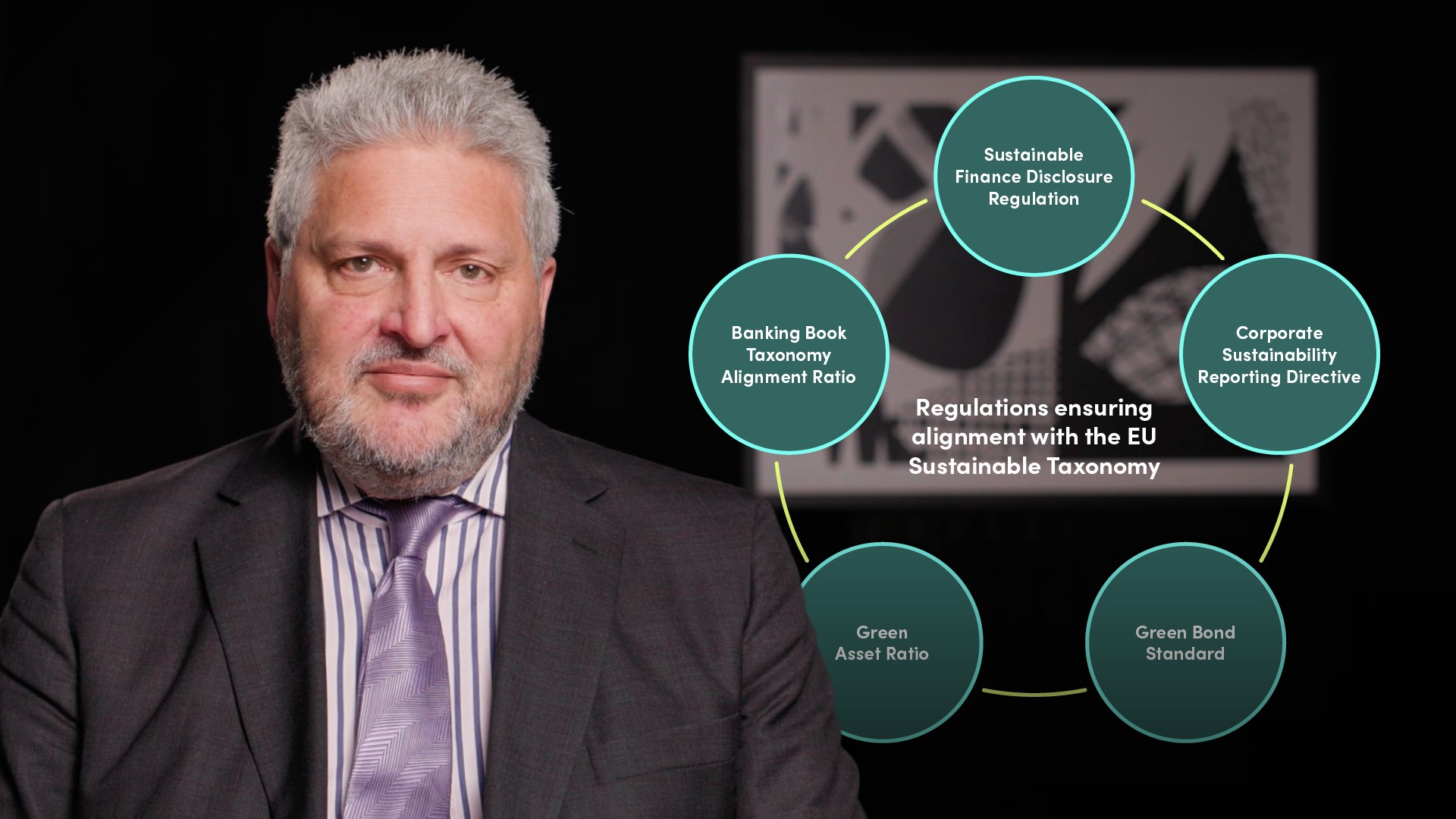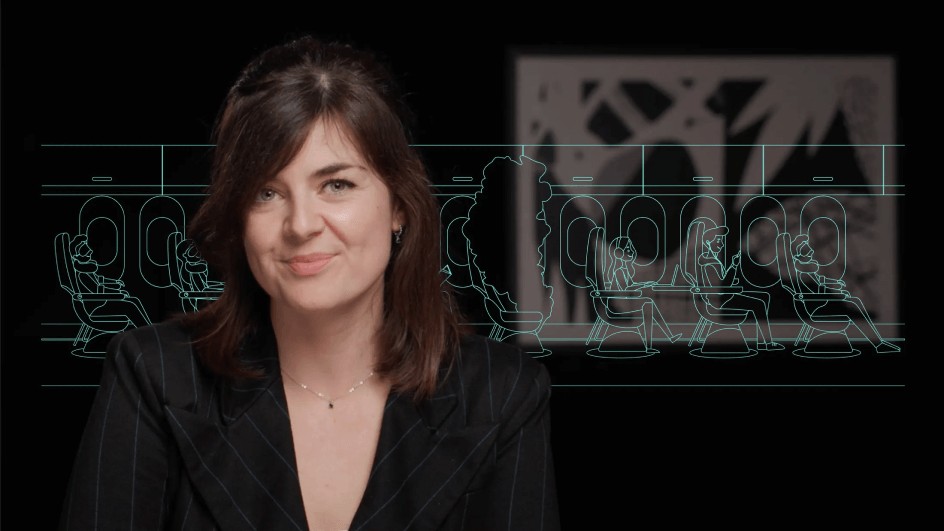
EU Sustainable Finance Taxonomy

Keith Mullin
35 years: Capital markets editorial
Private capital flows are essential if the EU is to meet its net zero emissions targets. The EU created the EU Taxonomy for Sustainable Activities to make it easier for market stakeholders to know what activities are ‘sustainable’, so they can allocate capital to those activities. In this video, Keith discusses the taxonomy in detail, outlining how it was formed, who it is for, and the regulations supporting it.
Private capital flows are essential if the EU is to meet its net zero emissions targets. The EU created the EU Taxonomy for Sustainable Activities to make it easier for market stakeholders to know what activities are ‘sustainable’, so they can allocate capital to those activities. In this video, Keith discusses the taxonomy in detail, outlining how it was formed, who it is for, and the regulations supporting it.
Subscribe to watch
Access this and all of the content on our platform by signing up for a 7-day free trial.

EU Sustainable Finance Taxonomy
14 mins 1 sec
Key learning objectives:
Describe the EU Taxonomy on Sustainable Activities and its purpose
Outline some of the key regulations supporting the Taxonomy
Overview:
Private capital flows are essential if the EU is to meet its net zero emissions targets by 2050. The EU created the EU Taxonomy for Sustainable Activities to make it easier for market stakeholders to know what ‘sustainable’ means, so they can allocate capital to sustainable activities. The Taxonomy sits at the heart of the EU Green Deal. There are several regulations supporting the Taxonomy, including the Sustainable Finance Disclosure Regulation, the Corporate Sustainability Reporting Directive, the Green Bond Standard, and the Green Asset Ratio to name a few.
Subscribe to watch
Access this and all of the content on our platform by signing up for a 7-day free trial.
What is the EU Taxonomy on Sustainable Activities?
It is a wide-ranging taxonomy making it easier for market stakeholders to know what ‘sustainable’ means, so they can allocate capital to sustainable activities.
For an activity to be classed as environmentally sustainable, it must contribute substantially to:
- Climate-change mitigation and adaptation
- Sustainable use and protection of water and marine resources
- Transition to a circular economy
- Pollution prevention and control
- Protecting and restoring biodiversity and ecosystems
At the same time, one activity must ‘do no significant harm’ to another, and each activity must respect minimal safeguards as laid out in:
- The OECD’s Guidelines for Multinational Enterprise
- The UN’s Guiding Principles on Business and Human Rights
- The International Labour Organisation’s Declaration on Fundamental
- Principles and Rights at Work
- The International Bill of Human Rights
Regulations supporting the taxonomy include:
- The Sustainable Finance Disclosure Regulation (SFDR)
- The Corporate Sustainability Reporting Directive (CSRD)
- The Green Bond Standard (EuGBS)
- The Green Asset Ratio (GAR)
- The Banking Book Taxonomy Alignment Ratio (BTAR)
What is the Sustainable finance Disclosure Regulation (SFDR)?
Requires asset managers, insurance companies and pension funds and financial advisers to tighten up how they market funds to end-investors to prevent greenwashing. The rules have forced rigorous disclosure and transparency.
What is the Corporate Sustainability Reporting Directive (CSRD)?
A directive with the aim of upgrading the quality of corporate ESG reporting with a view to accelerating capital flows to sustainable investments.
The Commission aims to have a comprehensive set of data standards in place by 2024. It will, in parallel, amend various existing directives and regulations, including the Accounting Directive, the Audit Directive and Regulation, the Transparency Directive and the Non-Financial Reporting Directive, or NFRD.
The CSRD will expand the universe of companies covered from 11,600 (covered by the existing NFRD) to 49,000 listed companies and large unlisted companies. It will increase reporting requirements from 47% of EU limited companies by turnover to 75% and will capture all companies with securities trading on EU exchanges. Companies will also have to have their submissions audited. And they will be required to incorporate the ESG impacts of their supply chains and value chains.
What are EuGBs?
The EU has also put forward a proposal for a regulation to create a voluntary Green Bond Standard which will result in issuance under a special label, the EU Green Bond (EuGB). The purpose is to give investors comfort that standardised, regulated, Taxonomy-compliant instruments pose less greenwashing risk, with the overall aim of increasing finance flows to sustainable activities.
The EU’s GBS has four key components:
- EU Green Bond proceeds must be fully aligned with the taxonomy
- There must be full transparency on how proceeds are allocated
- EuGBs must be verified by an external reviewer or State auditor
- External reviewers of EuGBs must be supervised by the European Securities and Markets Authority
What is the Green Asset Ratio (GAR) and Banking Book Taxonomy Alignment Ratio (BTAR)?
Banks are also coming under greater ESG regulatory scrutiny. Banks will have to comply with tighter ESG disclosure standards and measure alignment with the Taxonomy.
In January 2022, the European Banking Authority published its final draft implementing technical standards on so-called Pillar 3 disclosures on climate-change-related transition and physical ESG risks.
Going forward banks will need to calculate two new ratios.
The Green Asset Ratio (GAR)
GAR = Proportion of the banks’ Taxonomy-aligned exposure to counterparties covered by the NFRD / Total exposures
The Banking Book Taxonomy Alignment Ratio (BTAR)
BTAR = %Taxonomy-aligned activities including exposures to counterparties not subject to the NFRD
Subscribe to watch
Access this and all of the content on our platform by signing up for a 7-day free trial.

Keith Mullin
There are no available Videos from "Keith Mullin"





























